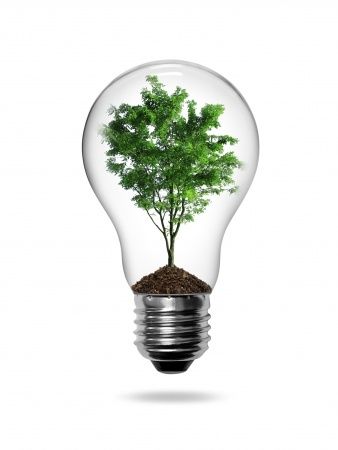Does choosing a green electricity contract really have a positive environmental impact?

In the US, most energy suppliers can offer green plans for electricity as well as gas. This way, the consumers can switch suppliers and stabilize their energy bills through a fixed rate plan, as well as contribute to protecting the environment. But how do green tariffs work? How can I choose where my energy comes from? How can natural gas be green? Callmepower has investigated for you.
| Summary |
|---|
To summarize
Subscribing to a green electricity or gas plan is more like paying for the development of renewable initiatives, rather than actually buying your energy directly from a renewable source. Indeed, when electricity comes into your home, you cannot choose where that electricity has come from. Much like your tap water might come from more than one source, you cannot choose where your water has come from.
Nevertheless, the system is made to guarantee that a given amount of renewable electricity produced cannot be sold twice as renewable energy, so when you purchase a certain amount of green energy through a supplier's green plan, you are effectively contributing to the development of renewable energy sources. It therefore also allows the consumers to express their support towards environmental issues. As the consumers become aware of these issues, the demand in green energy plans could increase, which would bring more funding to renewable energy producers, and progressively make these energies more competitive facing the carbon emitting energy producers.
Concerning natural gas, it can also be offered in plans with a 100% carbon offset. This has the same effect as the electric renewable plans. Even though you will be consuming natural gas which emits green house gases, you are paying a little bit extra in order to support the development of renewable energies. These payments may be received by companies developing biogas.
The traceability of green electricity
As said in the introduction, electricity from renewable energy sources is mixed with all the other electrons of the grid, and it is impossible to decide where each electron will go, in order to guarantee that a customer's electricity is 100% renewable. Nevertheless, the system of green energy rates guarantees that what you pay extra for a renewable tariff goes to renewable energy producers.
Different ways for suppliers to offer renewable plans
There are various ways a supplier can charge customers for 100% green plans, and fund renewable energy producers:
- Direct contact with local renewable energy producers: Suppliers contact renewable energy producers (Hydro, Wind Solar or other), and purchase a given amount of electricity from them. Being 100% renewable, this electricity will be more expensive to produce, and therefore, the price which the supplier agrees to pay will be higher than if the supplier were purchasing electricity from a non-renewable source. Therefore, when the supplier sells this electricity to its customers, its price will also be higher than non-green electricity.
- Renewable Energy Certificates (REC): an REC is given everytime a power producer generates 1 megawatt-hour (MWh) of electricity. The renewable energy producer can then be sold to a non-renewable energy procuder. In this manner, renewable energy producers are paid extra for their renewable energy production, and non-renewable energy producers must pay extra for producing non-renewable energy. When you sign up to a 100% green plan for slightly more money, this extra money is used by the supplier to purchase REC from the renewable power producers, hence supporting the development of renewable energy. This method can also be used for natural gas plans. Many suppliers offer 100% green natural gas, also called "natural gas with a 100% carbon offset".
- Funding renewable projects: some suppliers use the extra money made from the sale of renewable plans to fund renewable energy projects, or environmentally friendly projects. These can include, building more solar farms or wind farms, or other sources of renewable energy, planting trees, or other initiatives to reduce the amount of harmful pollutants in the environment.